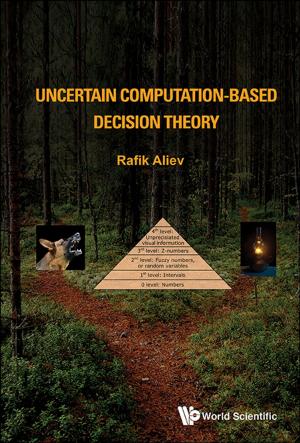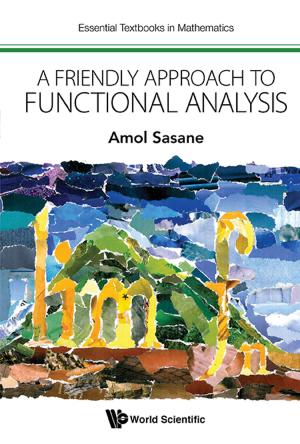Commemorations and Memorials
Exploring the Human Face of Anatomy
Nonfiction, Health & Well Being, Medical, Medical Science, Anatomy, Reference, Education & Training| Author: | Goran Štrkalj, Nalini Pather | ISBN: | 9789813143166 |
| Publisher: | World Scientific Publishing Company | Publication: | May 18, 2017 |
| Imprint: | WSPC | Language: | English |
| Author: | Goran Štrkalj, Nalini Pather |
| ISBN: | 9789813143166 |
| Publisher: | World Scientific Publishing Company |
| Publication: | May 18, 2017 |
| Imprint: | WSPC |
| Language: | English |
A major component of many modern human anatomy programs is commemorating people who have donated their body for education and research. In addition, some institutions have also organized memorial places to honor the body donors. This book is an edited volume which explores the phenomena of commemorations and memorials in anatomy. It includes both descriptive papers focusing on the content of the ceremonies and theoretical papers contextualizing and examining these within the broader ethical, scientific, medical and educational frameworks. Building up on the idea of a community of practice, the main objective of the volume is to enhance the exchange of ideas and sharing of experiences. The concepts of "commemoration" and "memorial" in anatomy programs are presented as emerging. They are seen as phenomena that will continue to evolve and ramify within different cultural and educational contexts, and this volume is expected to facilitate these processes. Indeed, meager literature on the topic indicates potentially enormous practical value in sharing and combining practices from different cultural and teaching/research traditions.
Contents:
- Introduction (Goran Štrkalj & Nalini Pather)
- Bioethical Aspects of Commemorations and Memorials (D Gareth Jones)
- Human Flourishing: Implications for Medicine, Education and Commemoration (John McClean)
- The Lack of Memorial Services in For-Profit and Non-Profit Willed Body Companies in the United States (Thomas H Champney)
- Remembering the Victims of Abusive Practices in Anatomy: The Example of Nazi Germany (Sabine Hildebrandt)
- Complexities and Remedies of Unknown-Provenance Osteology (Carl N Stephan, Jodi M Caple, Andrew Veprek, Emma Sievwright, Vaughan Kippers, Steve Moss and Wesley Fisk)
- The Curriculum of Compassion: Connecting Students with Donor Families (Ernest F Talarico, Jr)
- Commemoration Practices at Otago: Experiences from a Bicultural Society (Natasha AMS Flack, Kathryn McClea and Helen D Nicholson)
- Commemorations and Memorials in Anatomy: Tribute to the Donors and the Indigent Givers (Beverley Kramer and Graham J Louw)
- Commemorations and Memorials in Chinese Body Donation Programs (Luqing Zhang and Jiong Ding)
- The Ceremony to Honor the Body Donor as Part of an Anatomy Outreach Program in Brazil (Andréa Oxley Da Rocha, João Antônio Bonatto-Costa, Júlia Pedron, Maria Paula Oliveira de Moraes and Deivis De Campos)
- A Moment of Hope: Thanksgiving Services for Families of Donors (Nalini Pather and Ken Ashwell)
- Anatomy Commemorations on YouTube: A Review (Yousef AbouHashem, Benjamin T Brown and Goran Štrkalj)
- Concluding Remarks: Where to from here? (Nalini Pather & Goran Štrkalj)
Readership: Professional: anatomists, medical and science educators, human biologists/biological anthropologists, forensic scientists, medical practitioners; students: medicine, allied medical disciplines, medical science, human biology, biological anthropology; secondary: bioethicists, social/cultural anthropologists, sociologists and also segments of general public (the subject of new, more humane approach to anatomy teaching has attracted public attention — especially bearing in mind the dark history of anatomy which included numerous transgressions of law, ethical and cultural norms, such as the body snatching; for example, work of one of the contributors [described in his chapter] — Ernie Talarico was, only a few days ago, covered in several newspapers, including Chicago Tribune).
A major component of many modern human anatomy programs is commemorating people who have donated their body for education and research. In addition, some institutions have also organized memorial places to honor the body donors. This book is an edited volume which explores the phenomena of commemorations and memorials in anatomy. It includes both descriptive papers focusing on the content of the ceremonies and theoretical papers contextualizing and examining these within the broader ethical, scientific, medical and educational frameworks. Building up on the idea of a community of practice, the main objective of the volume is to enhance the exchange of ideas and sharing of experiences. The concepts of "commemoration" and "memorial" in anatomy programs are presented as emerging. They are seen as phenomena that will continue to evolve and ramify within different cultural and educational contexts, and this volume is expected to facilitate these processes. Indeed, meager literature on the topic indicates potentially enormous practical value in sharing and combining practices from different cultural and teaching/research traditions.
Contents:
- Introduction (Goran Štrkalj & Nalini Pather)
- Bioethical Aspects of Commemorations and Memorials (D Gareth Jones)
- Human Flourishing: Implications for Medicine, Education and Commemoration (John McClean)
- The Lack of Memorial Services in For-Profit and Non-Profit Willed Body Companies in the United States (Thomas H Champney)
- Remembering the Victims of Abusive Practices in Anatomy: The Example of Nazi Germany (Sabine Hildebrandt)
- Complexities and Remedies of Unknown-Provenance Osteology (Carl N Stephan, Jodi M Caple, Andrew Veprek, Emma Sievwright, Vaughan Kippers, Steve Moss and Wesley Fisk)
- The Curriculum of Compassion: Connecting Students with Donor Families (Ernest F Talarico, Jr)
- Commemoration Practices at Otago: Experiences from a Bicultural Society (Natasha AMS Flack, Kathryn McClea and Helen D Nicholson)
- Commemorations and Memorials in Anatomy: Tribute to the Donors and the Indigent Givers (Beverley Kramer and Graham J Louw)
- Commemorations and Memorials in Chinese Body Donation Programs (Luqing Zhang and Jiong Ding)
- The Ceremony to Honor the Body Donor as Part of an Anatomy Outreach Program in Brazil (Andréa Oxley Da Rocha, João Antônio Bonatto-Costa, Júlia Pedron, Maria Paula Oliveira de Moraes and Deivis De Campos)
- A Moment of Hope: Thanksgiving Services for Families of Donors (Nalini Pather and Ken Ashwell)
- Anatomy Commemorations on YouTube: A Review (Yousef AbouHashem, Benjamin T Brown and Goran Štrkalj)
- Concluding Remarks: Where to from here? (Nalini Pather & Goran Štrkalj)
Readership: Professional: anatomists, medical and science educators, human biologists/biological anthropologists, forensic scientists, medical practitioners; students: medicine, allied medical disciplines, medical science, human biology, biological anthropology; secondary: bioethicists, social/cultural anthropologists, sociologists and also segments of general public (the subject of new, more humane approach to anatomy teaching has attracted public attention — especially bearing in mind the dark history of anatomy which included numerous transgressions of law, ethical and cultural norms, such as the body snatching; for example, work of one of the contributors [described in his chapter] — Ernie Talarico was, only a few days ago, covered in several newspapers, including Chicago Tribune).















